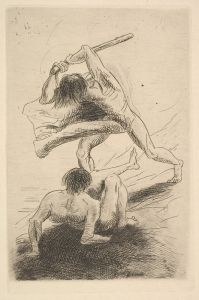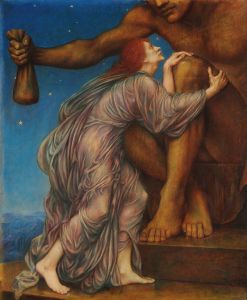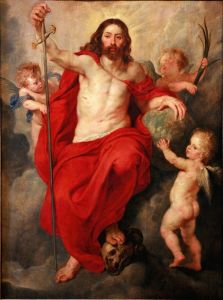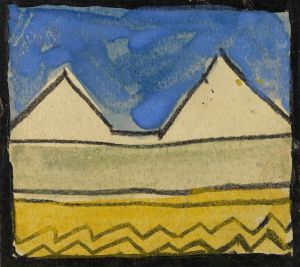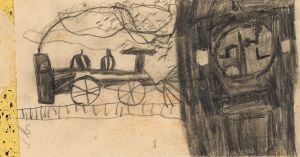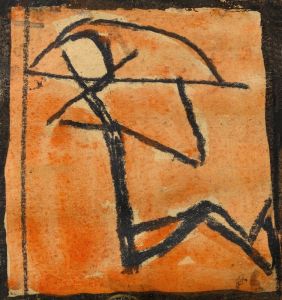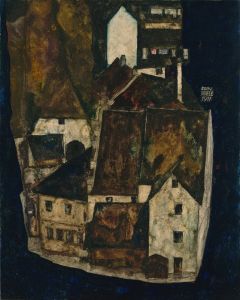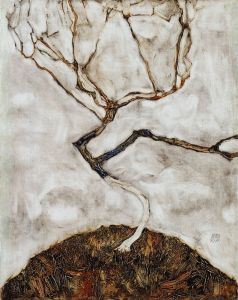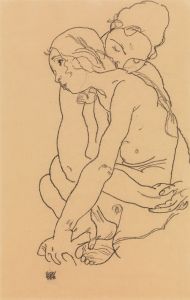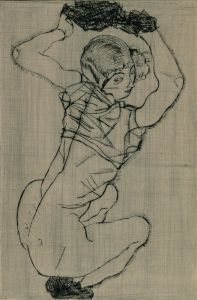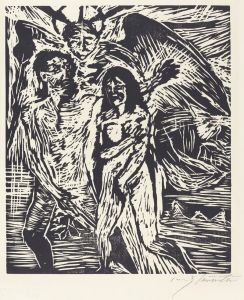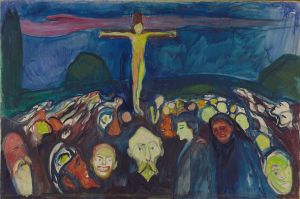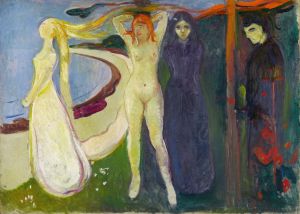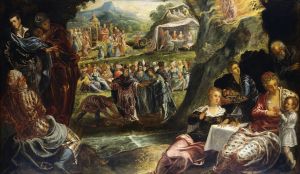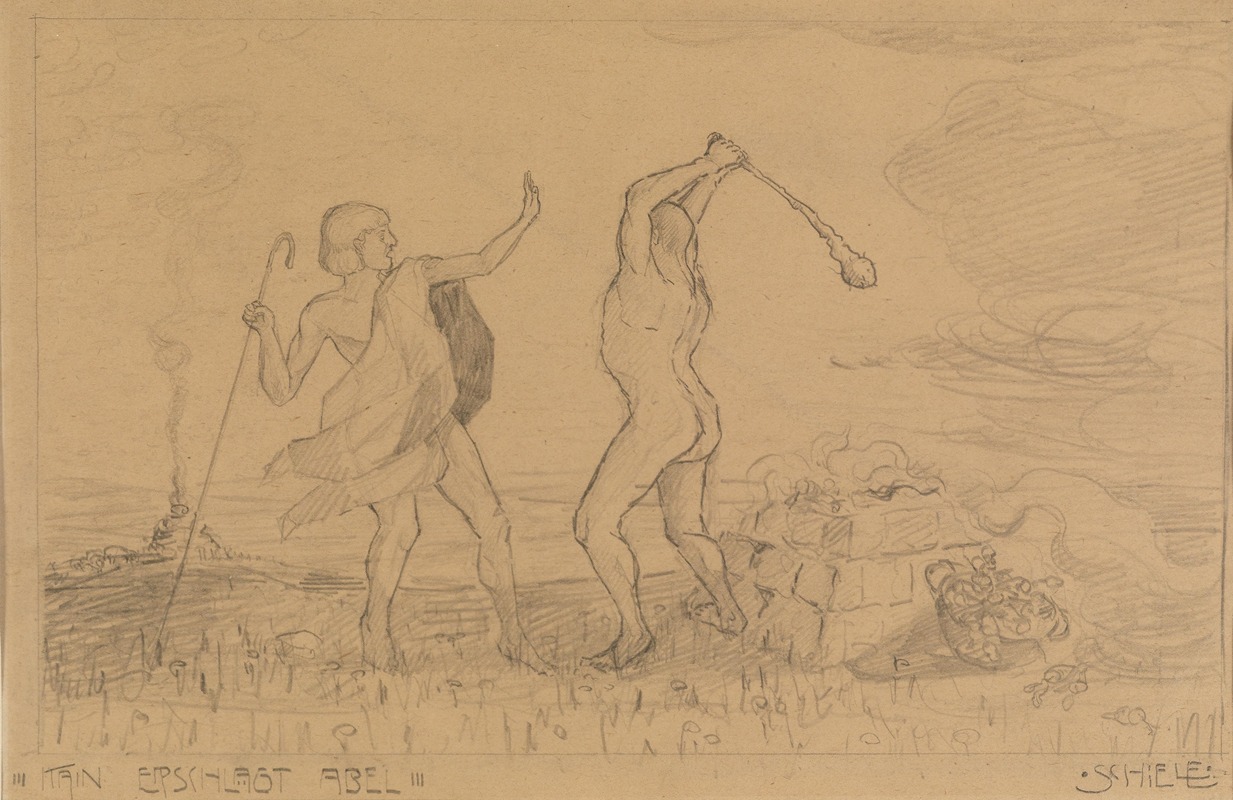
Kain erschlägt Abel
A hand-painted replica of Egon Schiele’s masterpiece Kain erschlägt Abel, meticulously crafted by professional artists to capture the true essence of the original. Each piece is created with museum-quality canvas and rare mineral pigments, carefully painted by experienced artists with delicate brushstrokes and rich, layered colors to perfectly recreate the texture of the original artwork. Unlike machine-printed reproductions, this hand-painted version brings the painting to life, infused with the artist’s emotions and skill in every stroke. Whether for personal collection or home decoration, it instantly elevates the artistic atmosphere of any space.
"Kain erschlägt Abel" (Cain Slays Abel) is a painting by the Austrian expressionist artist Egon Schiele, created in 1917. Schiele, born in 1890, was a prominent figure in early 20th-century art, known for his intense and often provocative works that explored themes of sexuality, death, and human suffering.
The painting depicts the biblical story of Cain and Abel, the sons of Adam and Eve. According to the Book of Genesis in the Bible, Cain, the firstborn, was a farmer, and Abel, his younger brother, was a shepherd. Both brothers made offerings to God, but God favored Abel's sacrifice over Cain's. In a fit of jealousy and rage, Cain killed Abel, committing the first murder recorded in the Bible.
Schiele's interpretation of this story is marked by his distinctive style, characterized by raw emotion, distorted forms, and a stark, almost skeletal depiction of the human body. In "Kain erschlägt Abel," Schiele captures the moment of violence and the intense psychological drama between the two brothers. The figures are rendered with exaggerated, angular lines and a sense of tension that is palpable. The use of color is minimal, focusing on the stark contrast between light and shadow to heighten the dramatic effect.
Egon Schiele's work often delved into the darker aspects of human nature, and "Kain erschlägt Abel" is no exception. The painting reflects his fascination with the complexities of human emotions and the darker impulses that drive people to commit acts of violence. Schiele's ability to convey such profound themes through his unique artistic vision has cemented his place as a significant figure in the history of modern art.
Schiele's career was tragically cut short when he died in 1918 at the age of 28, just a year after completing "Kain erschlägt Abel." Despite his brief life, he left behind a substantial body of work that continues to be celebrated for its emotional intensity and innovative approach to form and composition. His influence can be seen in the works of later artists who sought to explore the depths of the human psyche through their art.
Today, "Kain erschlägt Abel" is recognized as one of Schiele's important works, exemplifying his mastery of expressionism and his ability to convey complex narratives through his distinctive style. The painting is held in high regard by art historians and continues to be studied and admired for its powerful depiction of one of the most enduring stories of human conflict.





